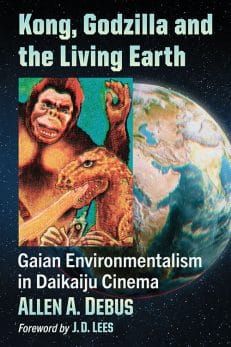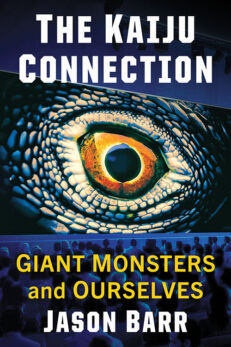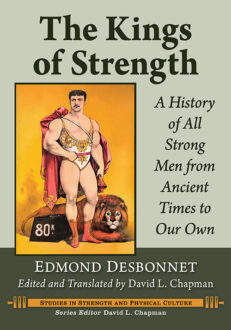The Kings of Strength
A History of All Strong Men from Ancient Times to Our Own
$49.95
In stock
About the Book
More than a century ago, the barrel-chested strongman clad in leopard skins, Roman sandals and carrying an oversized barbell was a common performer in fairs, circuses and vaudeville theaters. In 1911, before this phenomenon had disappeared, French gym owner, journalist and athlete Edmond Desbonnet published a colorful history of these mighty performers. Since he knew and interviewed many of these men (and women), Desbonnet was able to put a human face on the strongmen and strongwomen who made their livings by performing spectacular strength stunts for the entertainment of the public. Among these were super-strong athlete Louis Uni, known as Apollon; Eugen Sandow, the mighty Adonis of the stage; the great strongwoman Kati Sandwina Brumbach and many others who entertained audiences by lifting barbells, automobiles, horses and even elephants. Now translated to English and extensively annotated, The Kings of Strength records and preserves the biographies of more than 200 strength performers and bodybuilders from ancient times up to the early 1900s. The book provides a vital contribution to both theatrical and athletic history, while exploring the universal fascination with strength and muscular physiques.
About the Author(s)
Bibliographic Details
Edmond Desbonnet
Edited and Translated by David Chapman
Series Editor David L. Chapman
Format: softcover (7 x 10)
Pages: 470
Bibliographic Info: 240 photos, appendices, notes, bibliography, index
Copyright Date: 2022
pISBN: 978-1-4766-8724-7
eISBN: 978-1-4766-4505-6
Imprint: McFarland
Table of Contents
Preface and Acknowledgments 1
Edmond Desbonnet and His Times: An Introduction to The Kings of Strength 3
A Fascination with Strength: How the French Were Restored to Their Muscles 46
The Kings of Strength: A History of All Strong Men from Ancient Times to Our Own 55
Preface 57
First Part: Physical Strength in Antiquity 61
Second Part: Physical Strength in the Middle Ages 65
Third Part: Physical Strength in Modern Times 75
Fourth Part: Contemporary Athletes of the Nineteenth Century 87
Fifth Part: Modern Athletes: Nineteenth and Twentieth Centuries 164
The Super Athletes: The Demigods of Athletics 379
Appendix A: Weightlifting Terms and Metric Conversions 423
Appendix B: Letter from Edmond Desbonnet to Professor Louis Attila 426
Chapter Notes 427
Bibliography of Desbonnet Works 453
Bibliography of Monographs and Articles 454
Index 457
Book Reviews & Awards
• “Desbonnet’s The Kings of Strength is an invaluable work, an encyclopedia for historians interested in physical culture, sport history, gender studies and LGBTQ histories. Covering some of the best-known strength athletes (male and female) of the time, Desbonnet’s work is thoughtful, entertaining and highly informative.”—Conor Heffernan, University of Texas at Austin
• “David Chapman’s translation of The Kings of Strength, with his introduction and commentary on its wealth of vital visual material is a ground-breaking and invaluable addition to the growing list of important publications on the male body. One of the first books to internationalise sport, The Kings of Strength gives many insights into French society and history; it inspired a number of artists to reconsider and focus on the male body. This book also contributes to the history of the body and demonstrates how professional athletes marketed themselves, while providing both artists and the medical profession with modern ideals of the ‘perfect’ body—and giving insight into the often-hidden erotics of the male body.”—Anthea Callen, professor emeritus, The Australian National University, Canberra
• “The first history about feats of strength, and personalities involved in such, were not written in English, but in various European languages, where generally it is agreed such activities began—at least in an organized manner. David Chapman’s translation, coupled with his knowledge of the involved characters, has the potential to change the marketplace, and introduce to many followers of strength, knowledge which has been dormant for over a hundred years. It could become the Rosetta Stone of strength books.”—Joe Roark, webmaster of IronHistory.com and former historian of the International Federation of Bodybuilding





